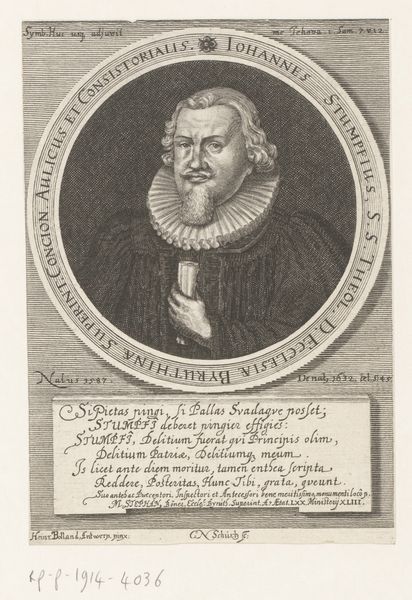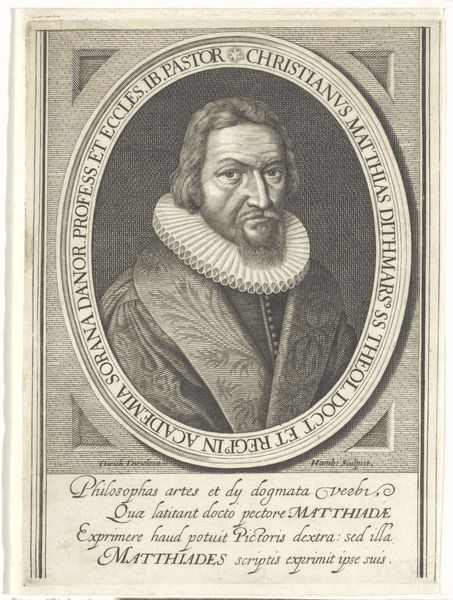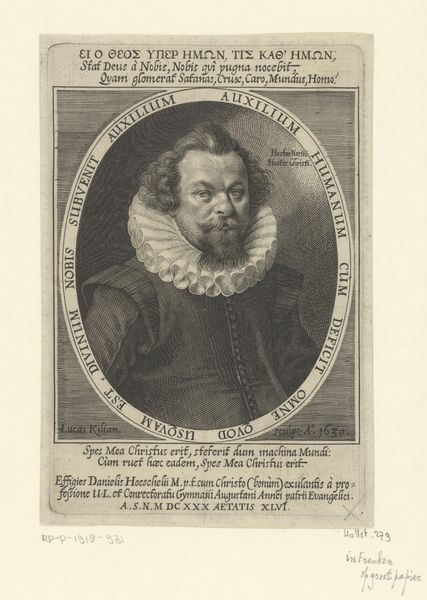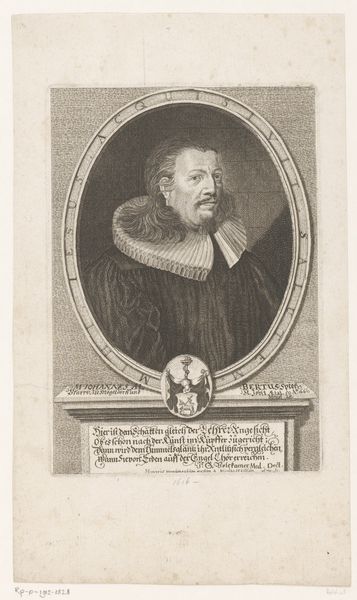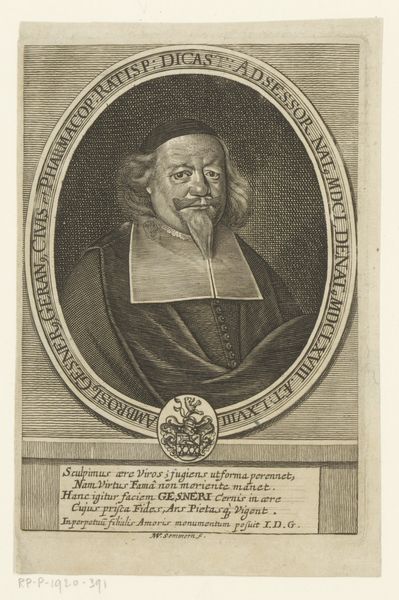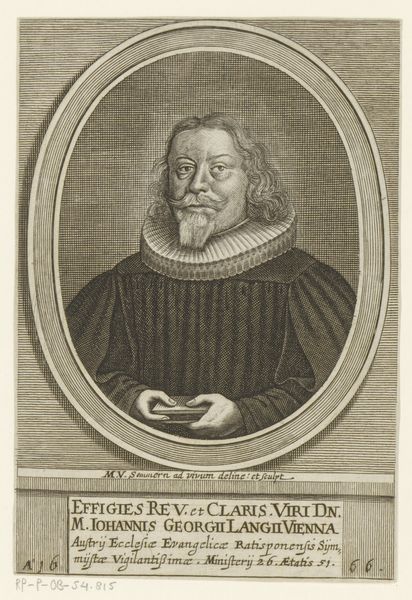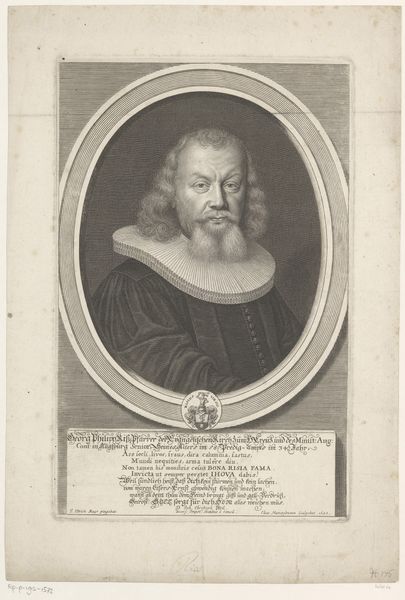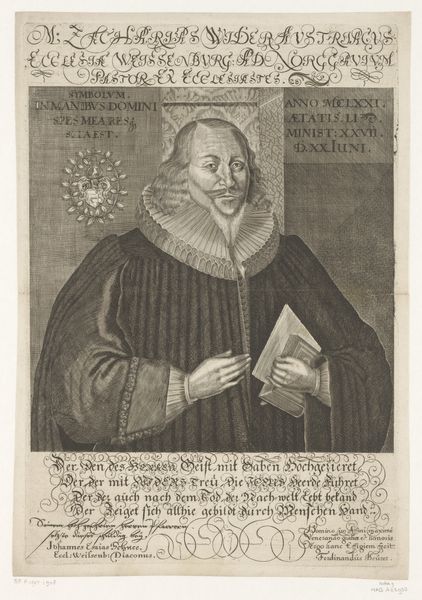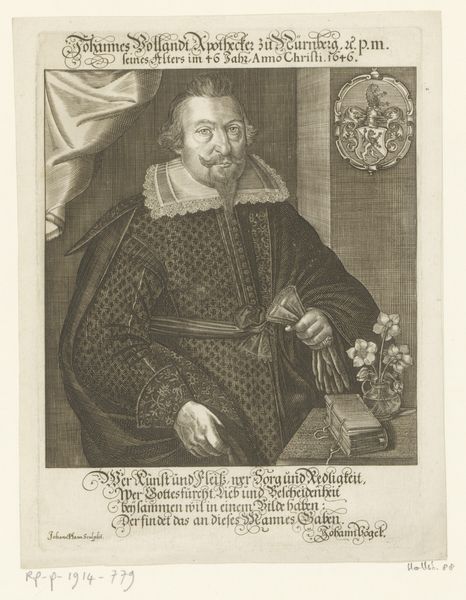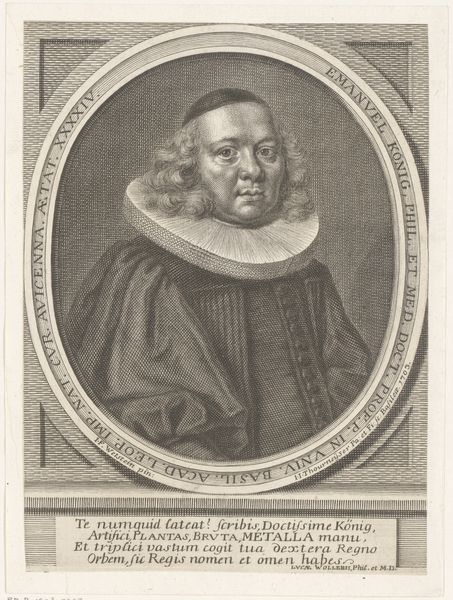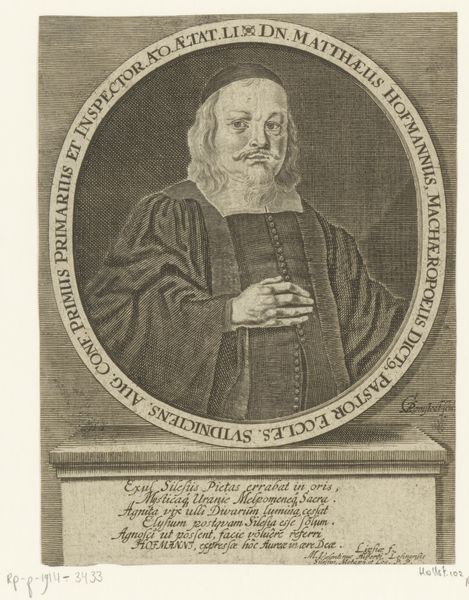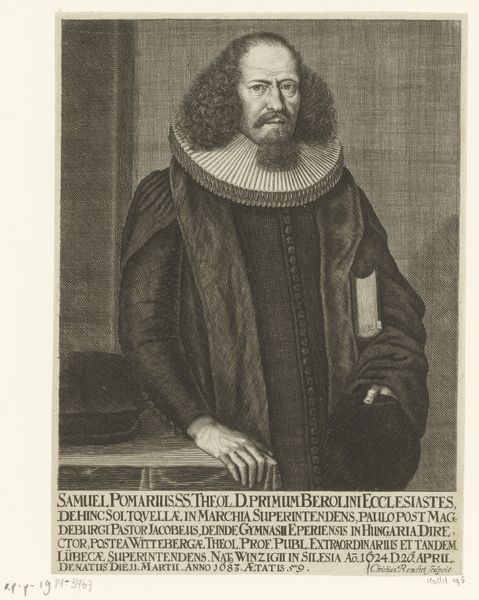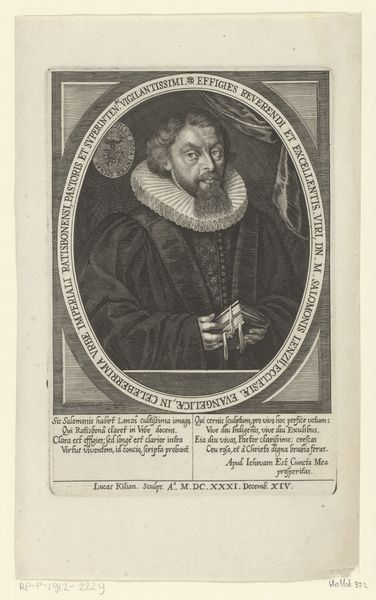
print, engraving
portrait
baroque
northern-renaissance
engraving
Dimensions: height 135 mm, width 104 mm, height 250 mm, width 152 mm
Copyright: Rijks Museum: Open Domain
Curator: Up next, we have a Northern Renaissance print. Lucas Kilian created this portrait engraving in 1617. The subject is Bernhard Ludwig Loeher, and the inscription tells us he was 37 years old at the time. It's currently held in the Rijksmuseum collection. Editor: My first thought? Stately, almost imposing. The contrasting lines create such visual depth, especially in his elaborate ruff. It's incredible how much detail Kilian captured using just engraving techniques. Curator: Indeed. The printing press played a critical role in disseminating portraits of prominent figures like Loeher during this era. Here was a Doctor of Holy Scripture, and a Court Preacher in Württemberg. Prints such as this one bolstered their influence through wider circulation. Editor: You see it serving a social function; I immediately read it as an exercise in textural contrast: the smoothness of the face against that wonderfully busy ruff, or the differences in how light reflects across the page based on the depth and frequency of the engraving lines. Curator: The Latin and German text integrated into the design, along with his title, also underscored Loeher's authority and erudition, in a period of intense religious and political conflict. Augsburg, where the print was made, was a major center for this type of printed material, crucial for spreading both religious and secular ideas. Editor: I noticed the almost decorative quality given to text, treated with equal weight to the visual elements. It balances the composition by giving structure to the open space. It is so much more than simple textual accompaniment. Curator: Right. It’s clear Kilian wanted to ensure both the sitter's likeness and status were unmistakably clear to anyone viewing it. He was making this portrait as a record. Editor: For me, the brilliance of the engraving technique is what resonates. I was totally consumed by its formal beauty and the artist's hand. But you’ve highlighted the work’s place as part of a broader historical narrative. Curator: Absolutely! Both aspects offer us a more complete picture.
Comments
No comments
Be the first to comment and join the conversation on the ultimate creative platform.
